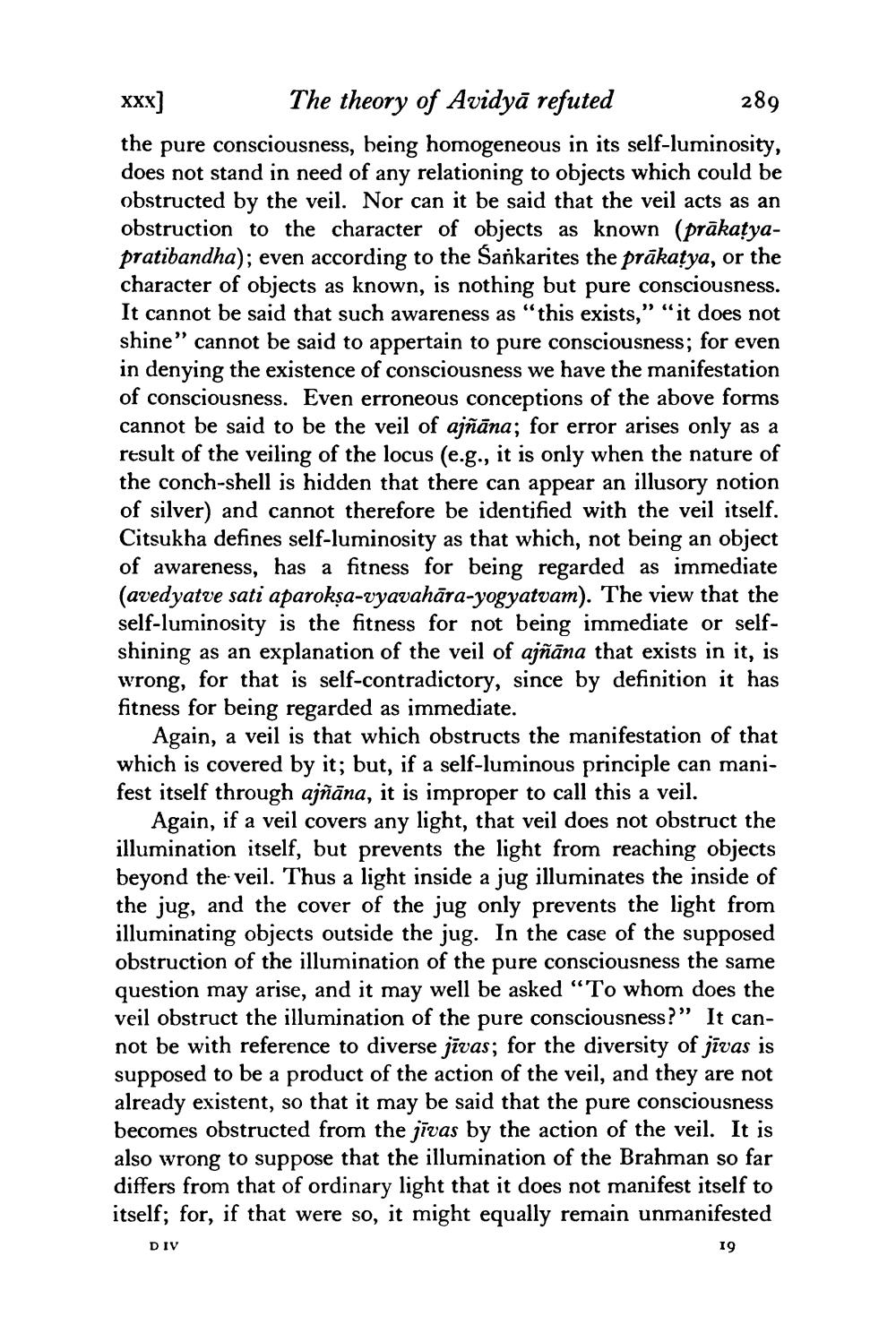________________
XXX] The theory of Avidyā refuted
289 the pure consciousness, being homogeneous in its self-luminosity, does not stand in need of any relationing to objects which could be obstructed by the veil. Nor can it be said that the veil acts as an obstruction to the character of objects as known (prākatyapratibandha); even according to the Sankarites the prākatya, or the character of objects as known, is nothing but pure consciousness. It cannot be said that such awareness as “this exists," "it does not shine" cannot be said to appertain to pure consciousness; for even in denying the existence of consciousness we have the manifestation of consciousness. Even erroneous conceptions of the above forms cannot be said to be the veil of ajñāna; for error arises only as a result of the veiling of the locus (e.g., it is only when the nature of the conch-shell is hidden that there can appear an illusory notion of silver) and cannot therefore be identified with the veil itself. Citsukha defines self-luminosity as that which, not being an object of awareness, has a fitness for being regarded as immediate (avedyatve sati aparokșa-vyavahāra-yogyatvam). The view that the self-luminosity is the fitness for not being immediate or selfshining as an explanation of the veil of ajñāna that exists in it, is wrong, for that is self-contradictory, since by definition it has fitness for being regarded as immediate.
Again, a veil is that which obstructs the manifestation of that which is covered by it; but, if a self-luminous principle can manifest itself through ajñāna, it is improper to call this a veil.
Again, if a veil covers any light, that veil does not obstruct the illumination itself, but prevents the light from reaching objects beyond the veil. Thus a light inside a jug illuminates the inside of the jug, and the cover of the jug only prevents the light from illuminating objects outside the jug. In the case of the supposed obstruction of the illumination of the pure consciousness the same question may arise, and it may well be asked "To whom does the veil obstruct the illumination of the pure consciousness?” It cannot be with reference to diverse jīvas; for the diversity of jīvas is supposed to be a product of the action of the veil, and they are not already existent, so that it may be said that the pure consciousness becomes obstructed from the jīvas by the action of the veil. It is also wrong to suppose that the illumination of the Brahman so far differs from that of ordinary light that it does not manifest itself to itself; for, if that were so, it might equally remain unmanifested
DIV




